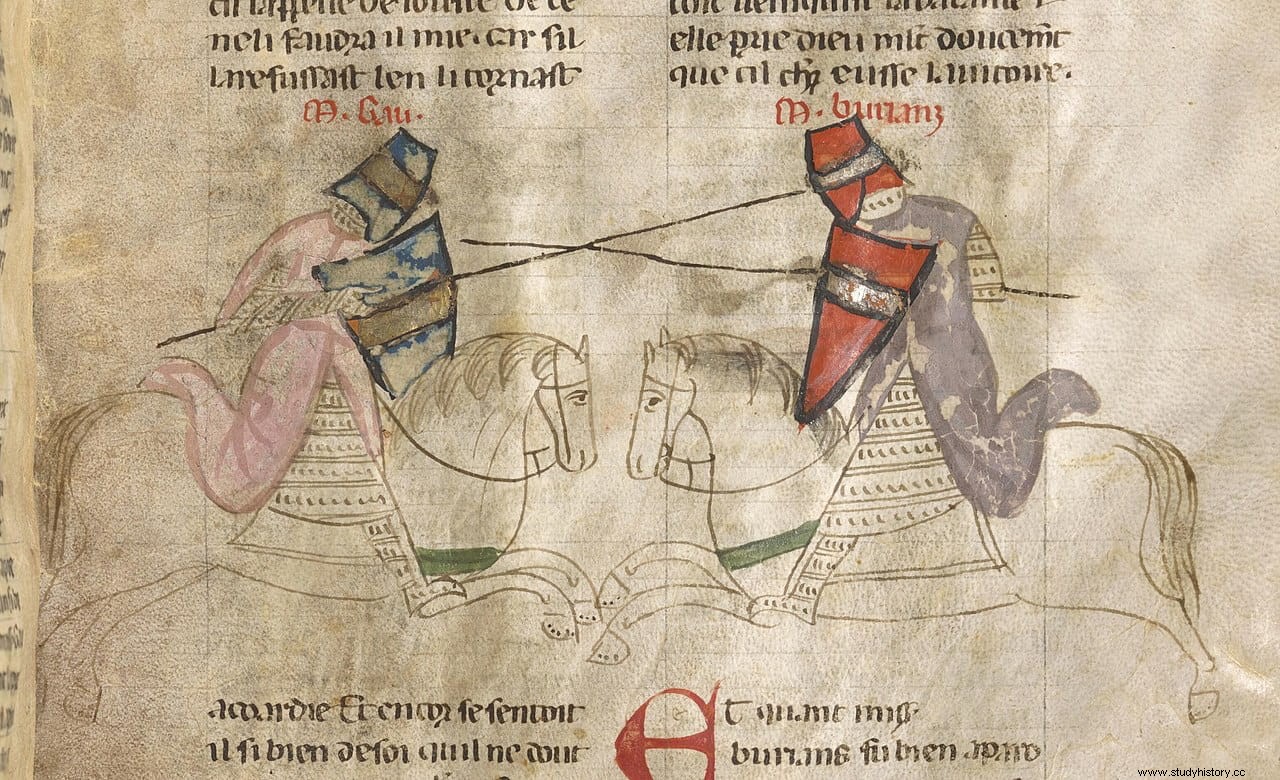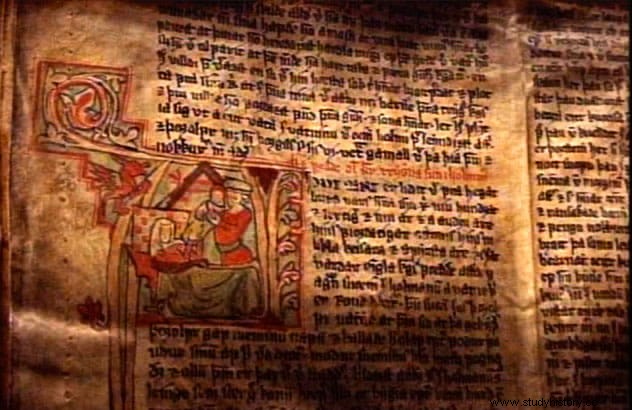A new study concludes that although the Knights of the Round Table have gained worldwide fame, most medieval English heroic or chivalrous stories have been lost. Meanwhile, more than three-quarters of the medieval stories in Icelandic and Irish survive to the present, in an unusual pattern that suggests island "ecosystems" helped preserve the culture.
Vast amounts of literature that were a mainstay of culture in medieval Europe have not survived, due to library fires and people disposing of or creatively recycling them. As a result, scientists do not know to what extent surviving literature is representative of that which once existed, a phenomenon known as survival bias, which means that they risk underestimating the diversity of cultural production in societies. medieval societies.
The findings come from an international research team, including Oxford experts, who have applied statistical models used in ecology to estimate the loss and survival of valuable artifacts and stories from different parts of Europe. This ecological approach offers a new perspective on cultural heritage loss, which complements previous research. Their findings are published in the journal Science , with Mike Kestemont (University of Antwerp) and Folgert Karsdorp (KNAW Meertens Institute) as lead authors.
Dr. Katarzyna Anna Kapitan, an Old Norse philologist and junior research fellow at Linacre College, Oxford, says:Using statistical methods borrowed from ecology, we have been able to extend previous knowledge. We estimate that more than 90% of the medieval manuscripts that preserve chivalric and heroic tales have been lost. This roughly corresponds to the scale of loss that historians of the book had estimated using different approaches. In addition, we have been able to estimate that around 32% of the chivalric and heroic works of the Middle Ages have been lost over the centuries .

The team used invisible species models coming from ecology to measure the loss of stories from medieval Europe, such as the romances about King Arthur, or the heroic legends about Sigurd the dragon slayer or the legendary ruler Ragnar Lóðbrok, known to the general public thanks to the series of vikings tv Their estimates of loss and survival are consistent with the scant historical evidence.
The study revealed significant differences in the survival rates of medieval works and manuscripts in different languages, suggesting that the Irish tradition of medieval narrative fiction is the best preserved, while works in English suffered the most severe losses. The team calculated that around 81% of Irish medieval romances and adventure tales survive today, compared to just 38% of similar works in English. Furthermore, the results suggest that around 19% of medieval Irish manuscript books survive, compared to only 7% of English examples.
Dr. Daniel Sawyer, Fitzjames Research Fellow in Medieval English Literature at Merton College, Oxford, says:We have found remarkably low estimated survival rates for medieval English fiction. We could blame the dissolution of the monasteries under Henry VIII, which dispersed many libraries. But heroic stories in English rarely appear in the catalogs of monasteries and convent libraries in the first place .
Another possible explanation could be found in the low prestige of the English language during this period Dr. Sawyer continues. Today, English is learned as a second language throughout the world, but during the Middle Ages it had little international importance. After the Norman Conquest, in particular, French was important in England as an international language of power and culture, and parts of what is now France were owned by the English crown.
In fact, if we add the fiction written in Norman French in England to the English testimonials, the survival rate of the English testimonials looks more like that of other languages. This demonstrates the importance of Norman French to English culture and suggests that the Norman French and English heroic stories formed a connected tradition. .

Meanwhile, Dr. Kapitan explains that the picture is very different in the case of Iceland, where, she says, we now know about three out of four medieval Icelandic romances and adventure tales (or 77%), but only one in six surviving medieval manuscripts of these works (17%) .
In addition to events such as library fires and book recycling, the research identifies the original "uniformity" of cultural production as an overlooked factor in the survival of ancient artifacts.
Kapitan states:Our research has revealed interesting similarities between the Icelandic and Irish tests. Both Icelandic and Irish literature have high survival rates of medieval works and manuscripts, and also very similar 'profiles of uniformity'. This means that the average number of surviving manuscripts from medieval works is more evenly distributed than in other traditions we have examined . The similarities between Iceland and Ireland may be due to enduring traditions of copying literary texts by hand long after the invention of the printing press .
Dr. Sawyer adds:The evidence could tell us about England's links to continental Europe in the Middle Ages, and about the influence of European culture in general on English writing. The size of England and its close ties to the continent could explain why the English tests do not show the uniformity found in the island distributions of stories in Iceland and Ireland .
These analyzes call for a broader application of these methods in the heritage sciences. The researchers agree that the collaboration between disciplines has been very stimulating. As Dr. Kapitan concludes, this demonstrates that transdisciplinary research allows us to go beyond anecdotal case studies of individual scribes or texts, and allows for broad comparisons between different places, traditions, and languages .
Fonts
University of Oxford | Mike Kestemont, Folgert Karsdorp, Elisabeth de Bruijn et al ., Forgotten books:The application of unknown species models to the survival of culture . 2022 Science, vol.375, Issue 6582, pp.765-769. DOI:10.1126/science.abl7655
